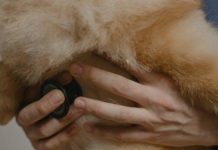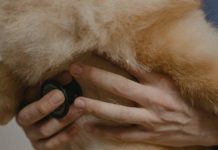Welcoming a new puppy into your home is an exciting and heartwarming experience, filled with playful antics and wagging tails. As a devoted pet parent, ensuring the health and happiness of your furry friend is a top priority. Understanding how to spot early signs of health issues is crucial for maintaining your puppy’s well-being and can make a significant difference in their quality of life. This guide aims to equip you with the knowledge and confidence to recognize subtle changes in your puppy’s behavior and physical condition, helping you act promptly and effectively. By being attentive and proactive, you can provide your puppy with the best start in life, fostering a strong, lifelong bond built on trust and care.
Recognizing Behavioral Changes in Your Puppy
Understanding your puppy’s behavior is key to recognizing potential health issues early on. Puppies, much like humans, have unique personalities and habits. However, sudden changes in these behaviors can be a signal that something might be wrong. Keep an eye out for the following signs:
- Lethargy: If your usually playful puppy becomes unusually tired or disinterested in activities, it may be time to consult a veterinarian.
- Appetite Changes: A sudden lack of interest in food or excessive hunger can indicate underlying health problems.
- Excessive Chewing or Biting: While puppies love to chew, doing so excessively might suggest discomfort or teething issues.
- Aggression or Fearfulness: A puppy that suddenly becomes aggressive or overly timid could be experiencing pain or anxiety.
It’s important to approach these changes with a warm and attentive demeanor, ensuring your puppy feels safe and loved. Noticing these shifts early allows you to address potential health concerns before they escalate. Trust your instincts and always seek professional advice if you’re unsure about your puppy’s health.

Understanding Physical Symptoms to Watch For
As a new puppy parent, it’s crucial to be observant of any physical changes your furry friend may exhibit. Puppies can’t communicate with words, so their bodies do the talking. Being attuned to these signs can make all the difference in catching potential health issues early. Here are some key symptoms to monitor:
- Changes in Appetite: A sudden loss of interest in food or a ravenous appetite could signal underlying health problems.
- Lethargy: Puppies are naturally playful. If your pup seems unusually tired or disinterested in activities, it may be worth investigating further.
- Vomiting or Diarrhea: Occasional digestive upset is normal, but persistent vomiting or diarrhea should not be ignored.
- Respiratory Issues: Watch for coughing, wheezing, or difficulty breathing, which could indicate respiratory infections or allergies.
- Skin and Coat Changes: Look for excessive scratching, redness, or a dull coat, as these can be signs of allergies, parasites, or skin infections.
Paying attention to these physical cues can help ensure your puppy receives timely veterinary care, setting them up for a healthy and happy life. Always consult your vet if you notice any of these symptoms persisting, as early intervention is key.

Creating a Routine Health Check for Your Puppy
Establishing a routine health check for your puppy is essential to ensure their well-being and catch any potential health issues early. Begin by setting aside a regular time each week to conduct these checks. During your examination, observe your puppy’s eyes, ears, and nose. Healthy eyes should be clear and bright without any discharge. Ears should be clean and free from odor or excessive wax, while the nose should be moist and cool. Regularly inspecting these areas can help you spot signs of infections or allergies before they become serious.
- Skin and Coat: Look for signs of dryness, dandruff, or unusual lumps.
- Gums and Teeth: Healthy gums are pink, and teeth should be free from tartar.
- Behavior Changes: Note any changes in energy levels, appetite, or bathroom habits.
- Weight Monitoring: Keep track of your puppy’s weight to ensure they are growing steadily.
Remember, these routine checks are not a substitute for regular veterinary visits but can help you maintain a proactive approach to your puppy’s health. With a keen eye and gentle touch, you can ensure your furry friend remains happy and healthy.

Consulting with a Veterinarian for Peace of Mind
Engaging the expertise of a veterinarian is crucial when you suspect something might be amiss with your puppy’s health. Regular consultations can offer a reassuring sense of security, ensuring that your furry friend is thriving. Veterinarians have the experience and knowledge to identify subtle signs that may escape the untrained eye. They can help you:
- Understand your puppy’s normal behavior and identify any deviations.
- Interpret symptoms that may seem insignificant but could indicate underlying health issues.
- Provide guidance on preventative care to ward off potential health concerns.
With a compassionate approach, your vet becomes a partner in your puppy’s well-being journey, helping you navigate through the uncertainties with confidence. Establishing a routine check-up schedule ensures early detection of potential issues, ultimately contributing to your puppy’s long-term health and happiness.
In Conclusion
As you embark on the rewarding journey of raising a puppy, remember that vigilance and early intervention are your best allies in ensuring their health and happiness. By familiarizing yourself with the early signs of potential health issues, you are taking a proactive step towards safeguarding your puppy’s well-being. Trust your instincts, and don’t hesitate to consult with your veterinarian if something feels amiss. Your attentive care and love are the foundation of a thriving, joyful life for your furry friend. Thank you for taking the time to learn how to better care for your puppy; they are truly lucky to have you by their side.
















